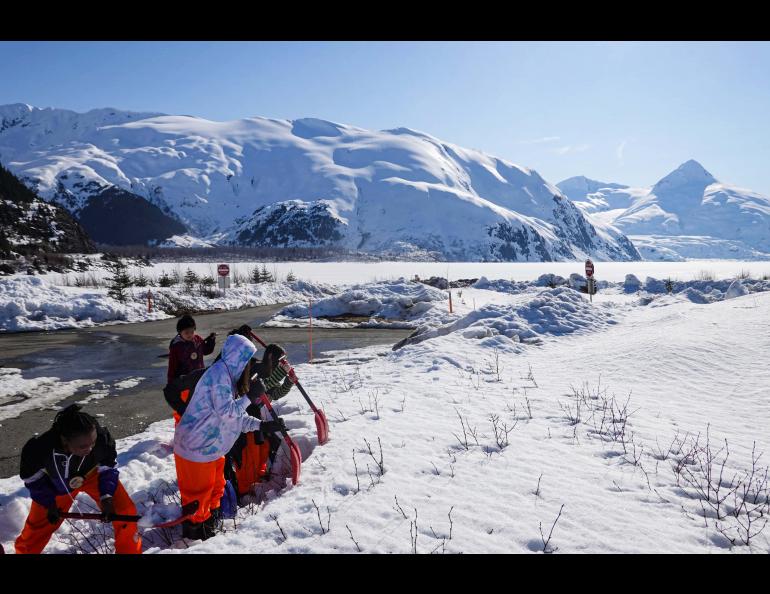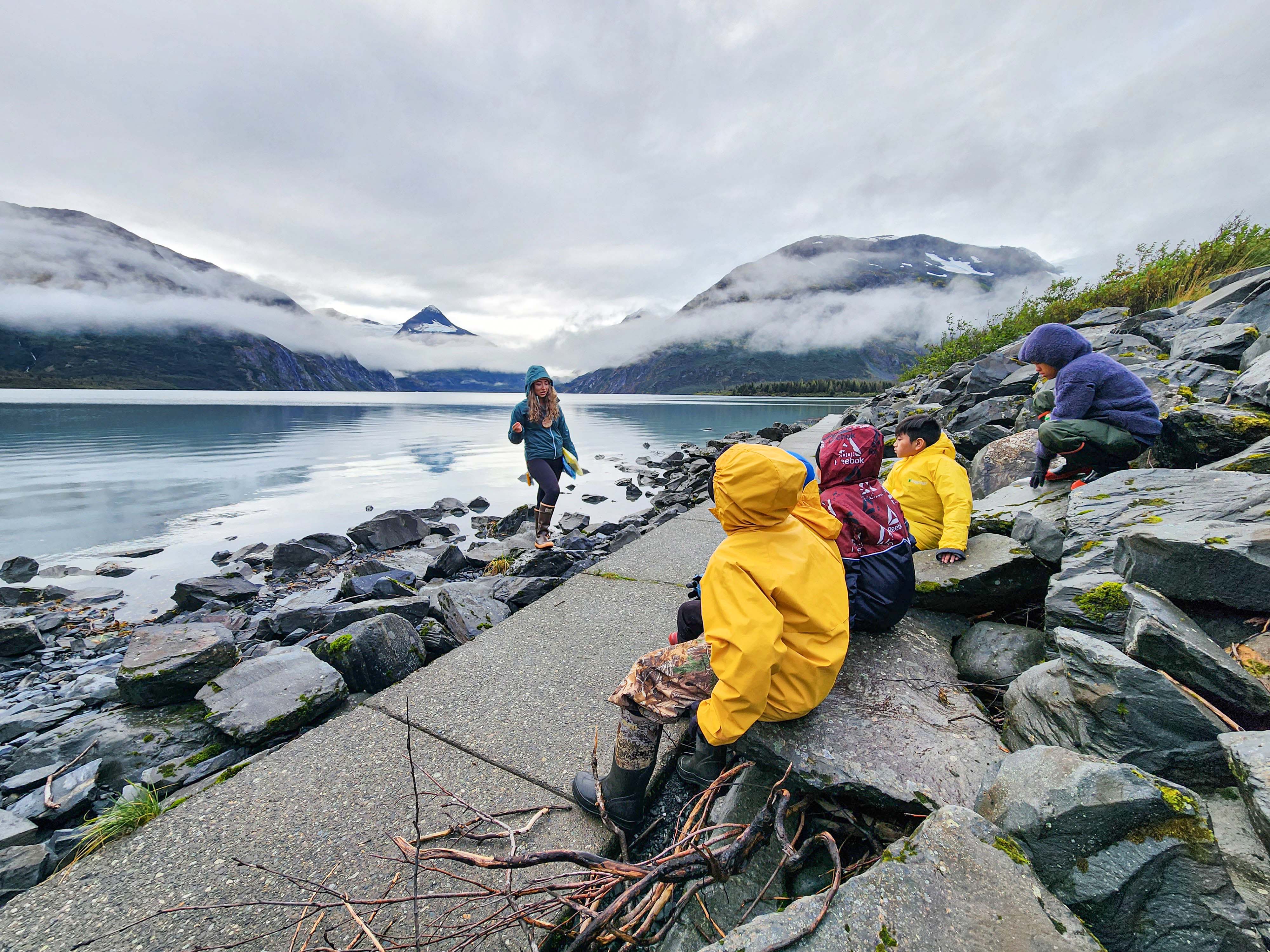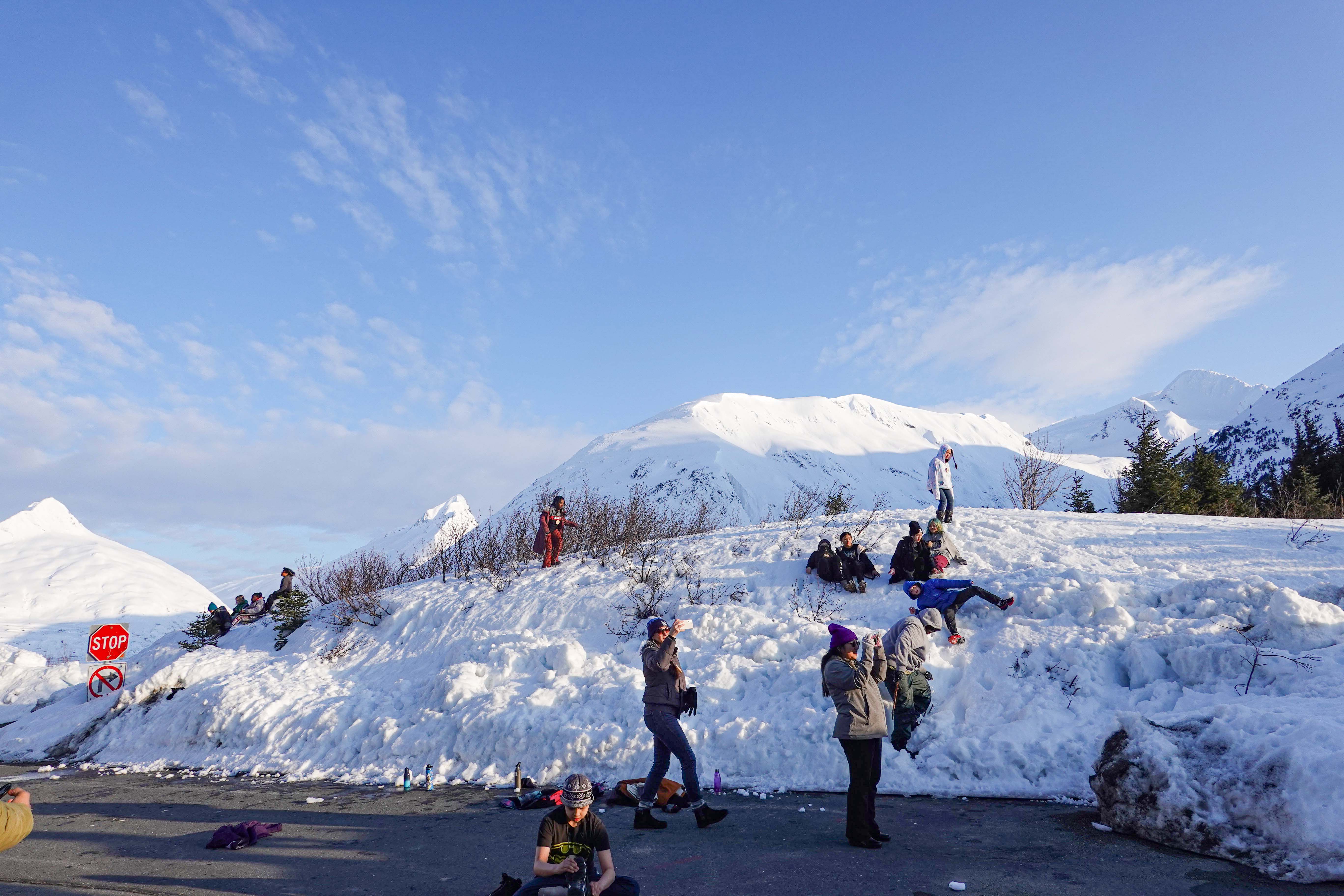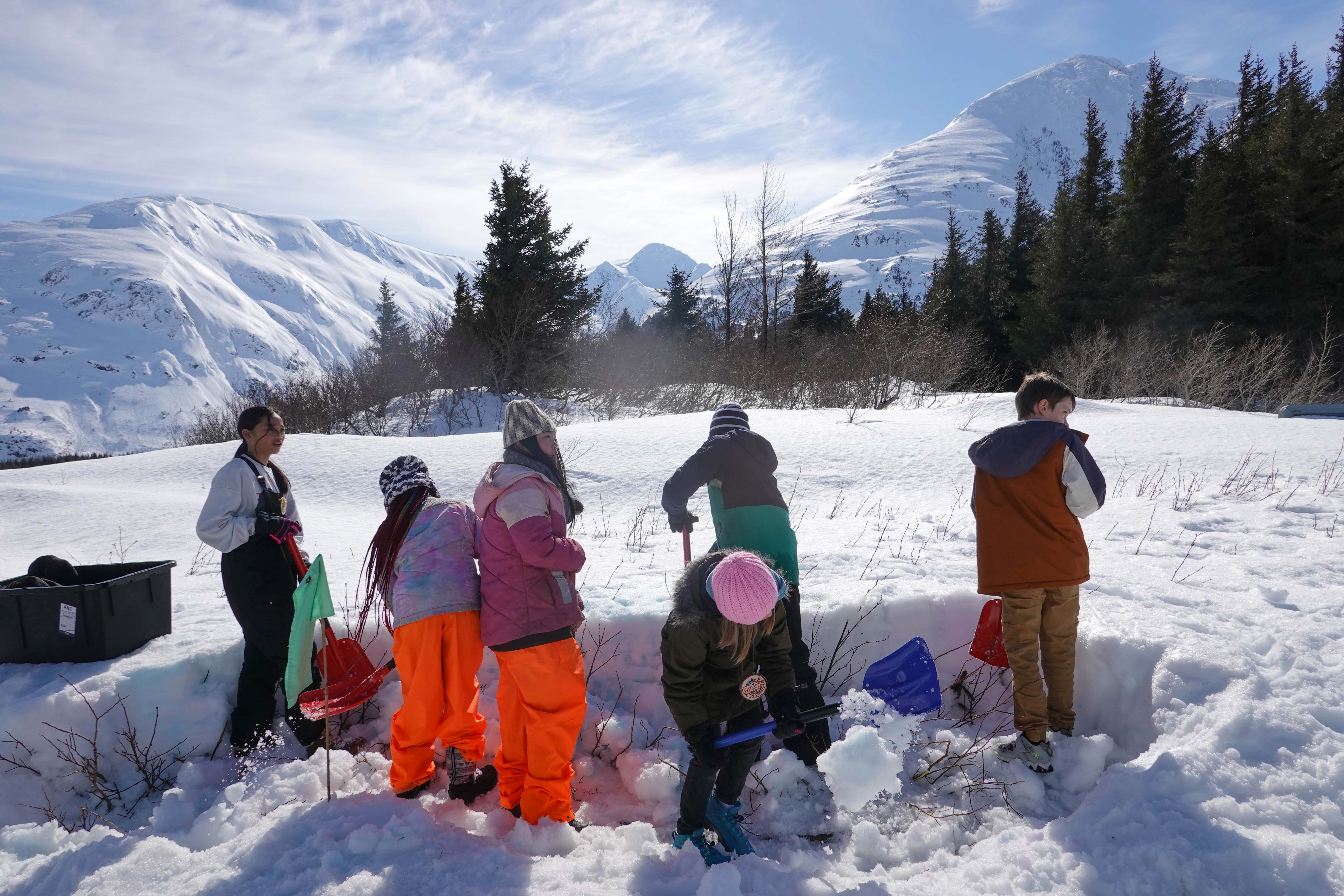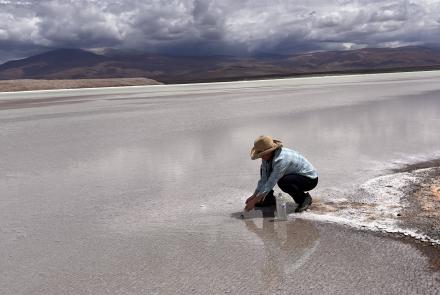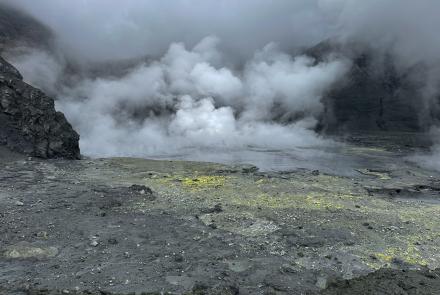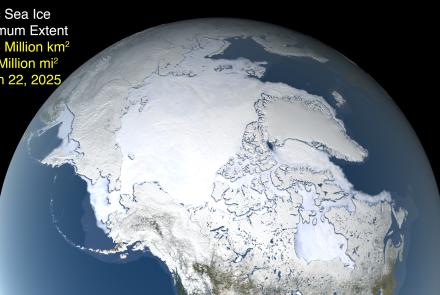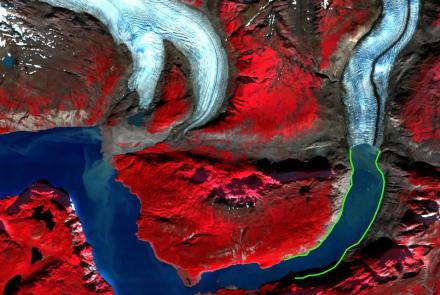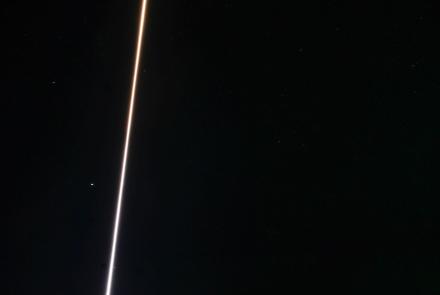Fifth graders, sleeping bags, campfires, s’mores.
And science.
It all rolled in together, along with much more, in a NASA-supported education outreach program this year by the University of Alaska Fairbanks Geophysical Institute’s Snow, Ice & Permafrost Group and others in the Kenai Mountains-Turnagain Arm National Heritage Area. Other partners in the program included the KMTA Corridor Communities Association, which manages the area, the National Forest Service and the Fish & Wildlife Service.
“A lot of the students have maybe been outside for recess, but they haven't necessarily used that time to explore and make observations,” said Serina Wesen, the Snow, Ice & Permafrost Group’s education and outreach designer. “Or it might be their first time seeing a glacier, so it’s all really awesome.”
The program is through KMTA’s Alaska Outdoor School, which is affiliated with the Winter Wildlands Alliance’s SnowSchool program. Winter Wildlands is a national nonprofit organization that works toward the protection of the nation’s wild snowscapes. Its website states that it is an alliance of over 100 organizations and that it engages more than 33,000 students in science-based field trips and education at 60 sites.
The Kenai Mountains-Turnagain Arm National Heritage Area is located among the Kenai Peninsula’s mountains. It encompasses the communities of Bird/Indian and Girdwood, Portage, Whittier, Moose Pass, Seward, Cooper Landing, Sunrise, Hope and some waters of Prince William Sound.
The area is managed by the Kenai Mountains Turnagain Arm Corridor Communities Association. It is one of 62 National Heritage Areas designated by Congress and operated in partnership with the National Park Service.
The Geophysical Institute’s Snow, Ice & Permafrost Group used NASA grant funds to participate in KMTA’s Alaska Outdoor School in April and September, with sessions geared toward fifth graders. Sessions were generally three days each and held over two-week periods in spring and fall. The SIP Group plans to be involved again in spring 2024.
The Portage area is perfect for an education effort like KMTA’s Alaska Outdoor School, said Wesen, who has been with the SIP group for two years but has been involved with STEAM education — science, technology, engineering, arts and mathematics — since mid-2017. She previously worked for the Alaska Native Science & Engineering Program.
Portage, she said, offers a variety of study subjects: glaciers, rivers, a glacial moraine lake and forest, for example.
Each session starts with two sleepover nights at the Portage Glacier visitor center. The sleepover nights are filled with campfires, s'mores and other fun activities.
“The first day is always a little bit of craziness, because they have their sleeping bags and backpacks and everything,” Wesen said.
The daily sessions are held at the visitor center and consist of four focused units, with students spending time on each during their stay. There’s Awesome Aquatics, Glorious Glaciers, Chugach Forest Explorers and Portage as Place.
Each morning a student will participate in one or two of those focus areas. There’s lots of hands-on action, including assembling large blue and white plastic atomic particles to form water giant molecules.
It’s not all learning indoors, however. The afternoons are for activities in the great outdoors such as geocaching or digging up mushrooms. Wesen, for example, led students on glacier hikes during which she talked about glaciers, snow and avalanches.
“When they actually get to learn about the environment that they're seeing in person, they're very engaged and excited,” she said. “And it's a lot of fun.”
Not only do the students get to learn about the Portage area, but they also learn about some things Alaskans in general should know about. Things like the cold and bears.
“Sometimes they're a little bit frustrated by the cold, but we get them an extra pair of gloves or some hand warmers and a shovel, and then they get moving and warm up,” she said. “A lot of the time the students will associate snow with cold, and maybe they don't like the cold, but at the end of being with us they come out liking and learning about the snow and being able to handle the cold.”
“We do everything from outdoor safety to outdoor education, which is pretty exciting.”
The connection with the Alaska Outdoor School was a natural fit.
“Since there was already a SnowSchool based in Alaska that has groups that are interested in snow and interested in the outdoors,” Wesen said, “it was really nice to establish an ongoing connection with them.”
The relationship with KMTA’s Alaska Outdoor School is just one of many elements of the Snow, Ice & Permafrost Group’s education outreach.
Through a National Science Foundation grant, the SIP group has conducted outreach throughout Alaska. The grant funded a traveling museum exhibit called “Snow: Tiny Crystals, Global Impact” with the Oregon Museum of Science and Industry and the initial design and Alaska distribution of a Snow-STEAM kit in collaboration with the Ohio-based Center of Science and Industry.
Funding through their most recent NASA SnowEd-SnowEx grant also allowed for a variety of outreach activities over the past year. Those included partnering with the Geophysical Institute’s Science for Alaska lecture series and the federally sponsored UAF-GLOBE Program to do a kickoff event last January, visits to Fairbanks area elementary schools by NASA snow scientists and visits by Wesen and a UAF student to schools in Healy, Talkeetna and Willow.
Education and community outreach is an important part of the Geophysical Institute’s mission. The SIP group’s outreach program is one of many outreach efforts undertaken by the institute’s many research units.
“World-class research occurs at the Geophysical Institute, providing a great opportunity for people of all ages to learn from some of the best scientists in a variety of disciplines,” Geophysical Institute Director Bob McCoy said.
"Whether it’s engaging with Alaska schools, arranging our annual Science for Alaska lecture series, or through a number of other events, I'm proud of the efforts by our scientists and staff to share our research with Alaskans and science lovers everywhere,” he said.



